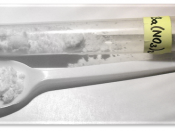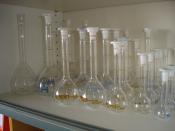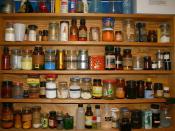Purpose
The purpose of the experiment is to determine the percent yield of the precipitate; by performing double displacement reaction between solutions of two different compounds.
Introduction
First of all when making a solution of two different compounds; there will many variables that can be considered during the experiment. However, the variables are controlled variables.
Controlled Variables
âÂÂamount of water that will be dissolved with the compound (amount of water until the compound is dissolved)
âÂÂtemperature inside the laboratory (constant)
âÂÂair pressure (constant)
âÂÂmass of reactant used (mass is less that 3g)
When we consider a double displacement reaction; we will need to think about the solubility rules. In our experiment we consider the rule that "Most nitrate (NO3-) salts are soluble." And "Most sulfate are soluble. Notable exceptions are BaSO4......" By this rules we can check the solutions that we will use during the experiment that whether it is soluble or not.
Also, we can check after the reaction, which of the compound is the precipitate. Hence, before the experiment it is possible to predict whether the reaction will include precipitate by the solubility rules. In this case the precipitate will be BaSO4.
Hypothesis
In this experiment the reaction equation will be:
CuSO4?H2O + Ba(NO3)2 âÂÂBa SO4+ Cu(NO3)2
In Lab#6 that we have done in Dec 15 2003; we have found out that the mole for hydrate in copper (II) sulfate is 5. Thus, by this experiment I will continue to use the answer that I have found in Lab#6. So by using the knowledge from Lab#6 the reaction equation will be:
CuSO45H2O + Ba(NO3)2 âÂÂBaSO4+ Cu(NO3)2
We can measure the mass of copper (â ¡) sulfate and the mass of the barium nitrate. Thus, we can calculate the theoretical yield of barium sulfate. By this, it is...


